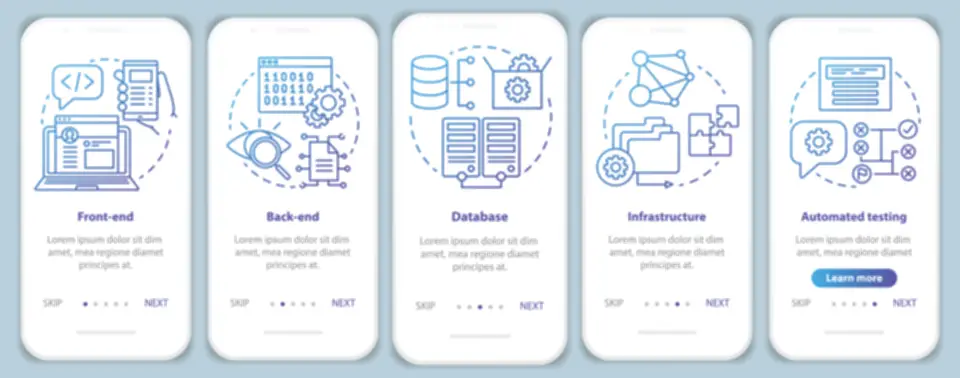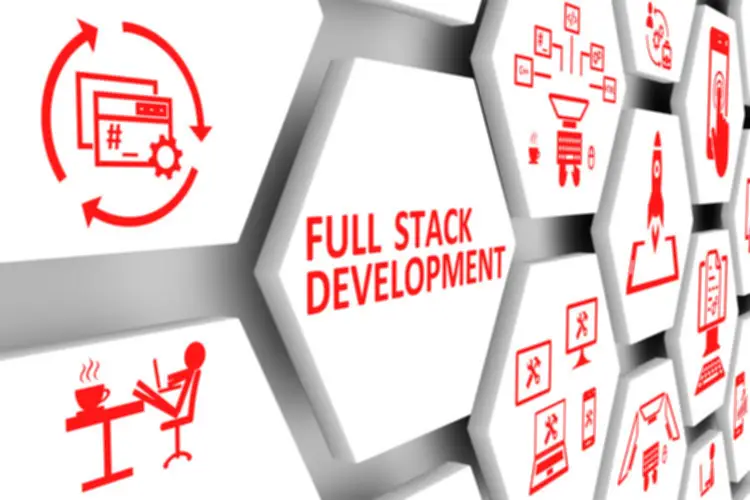It achieves this via interacting with the final layer, the Domain Mannequin layer which is the representation of the high degree data objects we use. Onion Architecture supplies a strong foundation for meeting the complicated necessities of modern functions. The Applying Core uses the Domain Core to implement application-specific use instances. It additionally accommodates the necessary interfaces for communication with outer layers. The structure promotes higher testability by isolating the core enterprise logic from exterior dependencies.
- Now, let’s work on the Core Layers ranging from the Area Project.
- First, you should create the Asp.net Core internet API project utilizing visual studio.
- DEV Neighborhood — A constructive and inclusive social community for software builders.
- By the top, you’ll be able to clear up easy algorithmic duties and acquire a transparent understanding of how primary console Java purposes function.
Logging Implementation
The innermost layer represents the core enterprise logic and domain entities, while successive layers encapsulate application services, interfaces, and exterior dependencies. I’ve spoken several times about a particular kind of architecture I name “Onion Architecture”. I’ve found that it leads to more maintainable applications because it emphasizes separation of considerations throughout the system.
Onion Structure: The Professionals And Cons Of Onion Growth
Thus, the swagger will open up by default every time you run the appliance. To hold things simple but show the structure to the fullest, we’ll construct an ASP.NET Core Web API that’s https://www.globalcloudteam.com/ fairly scalable. For this article, Let’s have a WebApi that has only one entity, Product. We will perform CRUD Operations on it whereas using the Onion architecture.
At Present, I am working with Micronaut, and using Onion Architecture along with it helps me to have a clear separation of issues and have a modular project construction. Micronaut’s support for dependency injection and its ability to work properly with totally different layers of the application aligns nicely with the principles of Onion Architecture. Nevertheless, we’re going to do one thing different from what you are normally used to when creating Web APIs. By convention, the controllers are defined within the Controllers folder inside the Net utility.Why is that this a problem? As A Result Of ASP.NET Core makes use of Dependency Injection everywhere, we have to have a reference to all of the projects within the solution from the Internet software project. This allows us to configure our providers inside the Startup class.
The three outer layers are these which aren’t immediately related to our business logic but depend upon on it fulfil their own objective. They can change usually and thus are separate from our core application logic. By encapsulating crucial business logic within the core area, Onion Architecture helps in implementing security measures at the lifecycle model most essential layers. This ensures that safety considerations are addressed at the core of the applying.
Maybe an Entity Framework Core Layer for Accessing the DB, a Layer particularly made to generate JWT Tokens for Authentication or perhaps a Hangfire Layer. You will perceive more after we begin Implementing Onion Architecture in ASP.NET Core WebApi Project. As talked about earlier, the Core Layers won’t ever depend upon another layer. Due To This Fact what we do is that we create interfaces within the Software Layer and these interfaces get implemented within the external layers. To maintain structural Sanity in Mid to Larger Solutions, it is at all times recommended to follow some kind of structure. You must have seen many of the Open Sourced Tasks having a number of layers of Projects inside a posh folder construction.
To learn to implement the repository pattern with Entity Framework Core you’ll find a way to check out this article ASP.NET Core Web API – Repository Pattern. The Service layer sits proper above the Domain layer, which means that it has a reference to the Area layer. The Service layer is cut up into two projects, Providers.Abstractions and Companies.
For the Area layer, we have to add the library project to our application. Low coupling happens when one module interacts with another without worrying concerning the internals of the opposite module. The internal implementation of exterior layers does not have to be a concern for all inner levels. Implementing Area Pushed Design (DDD) via onion structure significantly improves code quality, lowers complexity, and allows the event of evolving business techniques. The application uses the behaviour expressed by the interface, the small print of how the behaviour is executed lie in theinfrastructure layer.
This half is usually used in dishes that require sautéing or cooking because it adds depth to the flavour profile. The green tops of green onions are edible and provide a fresh, crisp texture, while the white base offers a slight chunk. This unique taste profile units them aside from conventional onions that could be far more pungent. Both varieties belong to the same household, however green onions are sometimes favored for their versatility in raw dishes or as a colorful accent in cooked meals.

The Onion structure is a form of layered structure and we can visualize these layers as concentric circles. The Onion structure was first introduced by Jeffrey Palermo, to overcome the issues of the traditional N-layered architecture method. I’ll be writing extra in regards to the Onion Architecture as a default strategy for building enterprise functions. I will stay in the enterprise system space and all discussion will reside in that context.

This makes it a bad selection, for moretechnical-oriented companies, e.g. a high-throughput proxy written in a reactive framework. An software iot cybersecurity written to assist manage a Library would likely have courses like Book,Reader, Copy and so on. The classes, relations and interactions between them describe the core of the domain of theapplication, i.e. what enterprise wants it fulfils and in what means. In the Library, there could be a strategy of adding newtitles to the catalogue, a process of borrowing and returning copies of a e-book, charging readers for overdue books, andmany extra. Database Independent – Since we now have a clear separation of data entry, it is fairly easy to switch between totally different database suppliers. This will be an Empty API Controller which could have API Versioning enabled within the Attribute and in addition a MediatR object.
We will comply with the identical course of for adding the library project in our software, however here we’d like some extra work after adding the project we have to add the reference of the Repository Layer. First, you should create the Asp.web Core net API project utilizing visible studio. These points had been addressed by Onion Architecture, which outlined layers from the core to the infrastructure (Separation of Concerns). It follows the fundamental rule by shifting all coupling to the middle (Loose Coupling). Each layer/circle wraps or conceals internal implementation particulars whereas providing an interface to the outer layer.
Good structure guides the implementation makes it straightforward to introduce new changes, and — to some extent — preventsless skilled staff members from making doubtful decisions. It permits developers to concentrate on the value-providingimplementation quite than considering Hmm the place should I put this class?. Further complexity to the construct setup and additional learning curve introduced by the layered method pays back duringdevelopment. It reduces the cognitive load on the programmer by giving a extra concrete structural foundation and steerage. Now, let’s work on the Core Layers ranging from the Domain Project. It basically has the models/entities, Exception, validation guidelines, Settings, and something that’s fairly widespread throughout the solution.
In the context of Onion Architecture, this means that internal layers rely upon outer layers, whereas outer layers remain impartial of the inner layers. The greatest offender (and most common) is the coupling of UI and business logic to knowledge entry. I’m deliberately ignoring infrastructure here as a end result of this typically varies from system to system. We often don’t keep techniques up-to-date as a outcome of it’s unimaginable to do.
The core business logic resides on the middle, surrounded by layers representing companies, interfaces, and external dependencies. This separation of considerations allows developers to modify or lengthen specific layers with out affecting the whole system. Onion Structure is a software architectural sample that promotes a modular and loosely coupled design, focusing on separation of issues and maintainability. It helps builders create purposes which may be extra versatile, testable, and easier to evolve over time. In this text, we’ll delve into the important thing ideas of Onion Architecture and supply an instance folder construction that illustrates its implementation. In the very middle we see the Area Mannequin, which represents the state and behavior mixture that models truth for the group.

